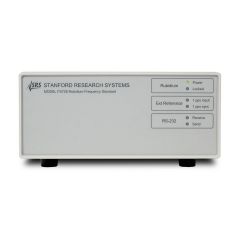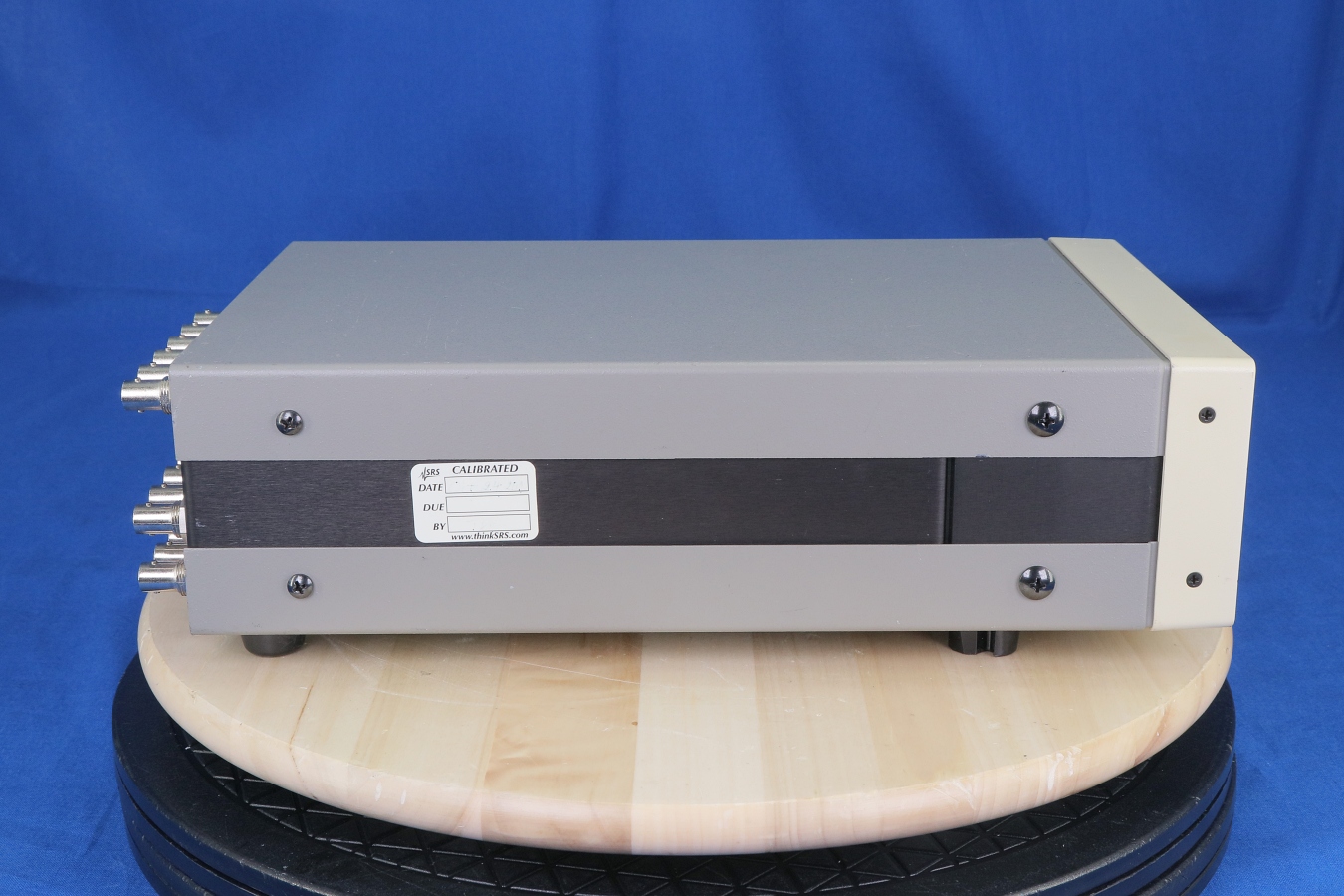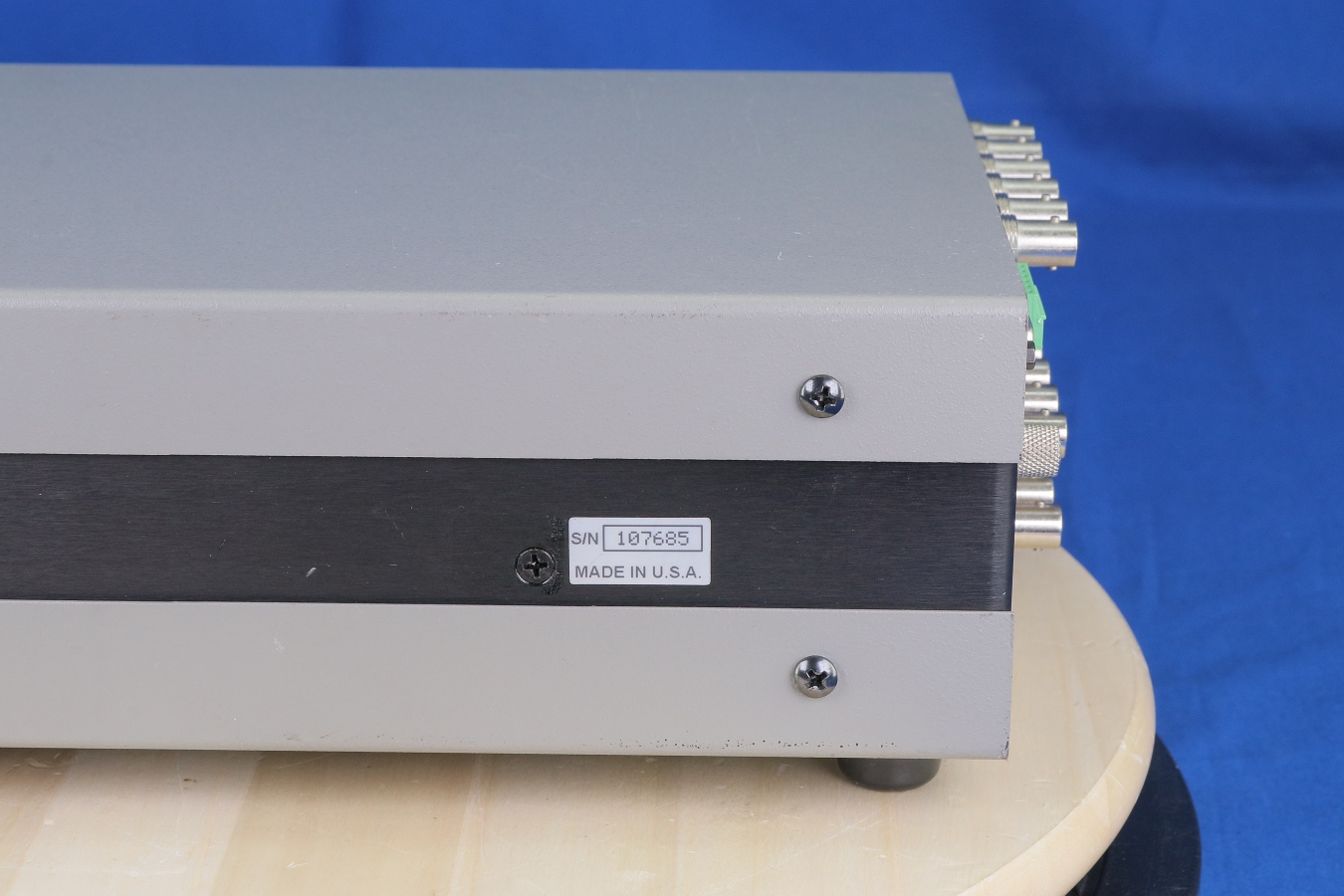
FS725 SRS Calibrator
• 10 MHz and 5 MHz outputs
• 20 year aging less than 0.005 ppm
• Ultra low phase noise(<-130 dBc/Hz at 10 Hz)
• Built-in distribution amplifiers
• 1 pps input and output
• RS-232 computer interface
REQUEST A QUOTE
Detail
10 MHz and 5 MHz outputs
1 pps input and output for GPS synchronization
20-year aging less than 0.005 ppm
Ultra-low phase noise (<−130 dBc/Hz at 10 Hz)
Built-in distribution amplifiers (up to 22 outputs)
RS-232 computer interface
Two status alarm relays
Output
Output frequencies: 10 MHz sine, 5 MHz sine, 10 μs wide 1 pps pulse
Amplitude: 0.5 Vrms, ±10 %
1 pps pulse amplitude: 2.5 V into 50 Ω, 5 V into High-Z loads
Phase noise (SSB): <–130 dBc/Hz (10 Hz); <–140 dBc/Hz (100 Hz); <–150 dBc/Hz (1 kHz); <–155 dBc/Hz (10 kHz)
Spurious: <–100 dBc (100 kHz BW)
Harmonics: <–60 dBc
Front-Panel Indicators (Green LEDs)
Power: “On” when AC power is applied
Locked: “On” when frequency is locked to Rb
1 pps input: Blinks with each 1 pps reference input applied to rear panel
1 pps sync: “On” when 1 pps output is synchronized within ±1 μs of 1 pps input
Receive: Blinks when RS-232 characters are received by FS725
Send: Blinks when RS-232 characters are sent by FS725
Rear-Panel Connections
Frequency adjust: 0 to 5 VDC adjusts frequency by ±0.002 ppm (normally unconnected)
1 pps input: One 100 kΩ input. Requires CMOS level pulses (0 to 5 VDC). If an external 1 pps input is applied, lock is maintained between the 1 pps input and 1 pps output, with computer adjustable time constant from 8 minutes to 18 hours.
10 MHz outputs: Two 50 Ω isolated sine outputs
5 MHz output: One 50 Ω sine output
1 pps output: One 50 Ω pulse output
Optional outputs: Each option board provides four 10 MHz, one 5 MHz, and one 1 pps outputs. Up to 3 boards can be installed.
Alarm relays: Max. current, 3 A. SPDT, normally open or normally closed. May be wired in parallel with other relays to “wire-or” a single alarm.
Rb lock: Relay status matches the front-panel “Locked” LED.
1 pps: Relay status matches the front-panel “1 pps sync” LED.
RS-232: 9-pin connector configured as DCE,9600 baud. Windows RbMon software is provided.
Environmental
Operating temperature: +10 °C to +40 °C
Storage temperature: –55 °C to +85 °C
Relative humidity: 95 % (non-condensing)
General
AC power: 90 to 132 VAC or 175 to 264 VAC, 47 to 63 Hz, 50 W
Dimensions: 8.5" × 3.5" × 13" (WHL)
The Stanford Research Systems FS725 integrates a rubidium oscillator (SRS model PRS10), a low-noise AC power supply, and distribution amplifiers in a compact, half-width 2U chassis. It provides stable and reliable performance with an estimated 20 year aging of less than 5 × 10–9, and a demonstrated rubidium oscillator MTBF of over 200,000 hours. The FS725 is an ideal instrument for calibration and R&D laboratories, or any application requiring a precision frequency standard.
Up to three internal distribution modules can be added to the FS725. Each module has four 10 MHz outputs, one 5 MHz output, and one 1 pps output, all with the same low phase noise, harmonic distortion and jitter.
An RS-232 interface allows direct communication with the rubidium oscillator. Using the provided Windows software, you can easily monitor and control 1 pps timing, and determine the instrument’s operational status.
There are two alarm relays that indicate the status of the rubidium oscillator lock state and synchronization to an external 1 pps input. The relays are SPDT, providing both normally-open and normally-closed contacts.
Option
Download
Video





